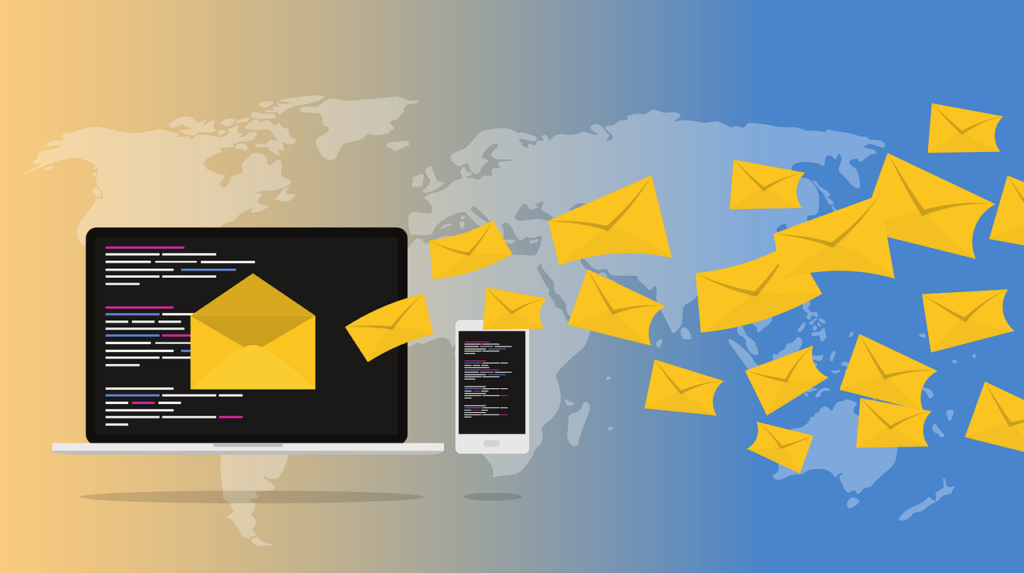Today, we are going to uncover the secrets of successful E-Learning email marketing. We will delve into the valuable strategies and techniques that will help educators and e-learning professionals optimize their email marketing efforts to engage with their audience effectively. Whether you are a teacher, instructor, or involved in the e-learning industry, we have the insights you need to elevate your email marketing game and achieve success in your online teaching endeavors.
Crafting Compelling Subject Lines
When it comes to email marketing for e-learning, it’s important to use action-oriented language that creates a sense of urgency to encourage engagement from the recipients. This can be achieved by personalizing subject lines with the recipient’s name or other relevant details to grab their attention. It’s also crucial to keep subject lines concise and clear so that they are fully visible on various devices and platforms. Additionally, A/B testing different subject lines is a great strategy to understand which ones resonate best with your audience and drive higher open rates, ultimately leading to better e-learning success.
Understanding the Importance of Subject Lines
Crafting compelling subject lines is crucial for the success of your e-learning email marketing campaigns. These lines play a vital role in determining whether your emails will be opened or ignored by the recipients. Well-crafted subject lines can have a significant impact on open rates, click-through rates, and overall engagement with your e-learning content. They essentially serve as the first impression of your email, influencing the recipient’s decision to engage with the content inside. Moreover, effective subject lines contribute to building brand recognition and trust among your e-learning audience, making them a powerful tool in your email marketing strategy.
Tips for Writing Engaging Subject Lines
To enhance the effectiveness of your e-learning email marketing, consider incorporating numbers or compelling statistics in your subject lines. This can pique curiosity and immediately provide value to the recipients, enticing them to open the email. Additionally, creating a sense of exclusivity or insider knowledge can make your audience feel special and eager to explore the content you have to offer. However, it’s important to avoid using all caps or excessive punctuation in your subject lines, as this can trigger spam filters and decrease deliverability. Lastly, don’t hesitate to experiment with humor or creativity in your subject lines, as long as it aligns with your brand voice and resonates with your target audience.
Segmenting Your Audience
Segmenting your audience is a powerful strategy that allows you to tailor your email content to the unique interests and needs of different groups. This personalization can significantly boost engagement and click-through rates for your e-learning email campaigns. Moreover, audience segmentation enables you to send targeted emails, ultimately leading to higher conversion rates for your e-learning offerings. By delivering relevant content that resonates with their specific requirements, you can build a stronger connection with your e-learning audience, enhancing their overall experience and loyalty.
Benefits of Audience Segmentation
Enhanced customer satisfaction and loyalty are among the key benefits of effectively segmenting your e-learning audience. By gathering valuable insights into the preferences and behaviors of distinct e-learner groups through audience segmentation, you can tailor your email messaging to address the pain points and aspirations of different segments within your e-learning audience. This level of improved relevance and personalization ultimately leads to higher open rates and interaction with e-learning content, creating a stronger connection with your audience and boosting overall engagement.
Effective Strategies for Segmenting Your Audience
When it comes to email marketing for e-learning, leveraging demographic data such as age, location, and educational background can be instrumental in creating distinct audience segments. Additionally, behavioral segmentation based on how e-learners interact with previous emails or course materials provides valuable insights for personalized content creation. Implementing psychographic segmentation that takes into account the diverse learning styles, goals, and motivations of different e-learner segments further enhances the effectiveness of your email campaigns. By combining these segmentation criteria, you can form comprehensive segments that enable highly targeted and engaging e-learning email campaigns, ultimately leading to better outcomes for your e-learning initiatives.
Creating Valuable Content
When developing valuable content for e-learning, addressing the specific needs and challenges of your target audience is paramount. This involves conducting thorough research to guarantee the accuracy, relevance, and currency of the information provided. Additionally, integrating multimedia elements like videos, infographics, and interactive quizzes can elevate engagement and retention of the e-learning materials. Moreover, employing storytelling techniques within the content can effectively weave a compelling narrative that resonates with e-learners, keeping them actively engaged in the learning process. By focusing on these strategies, you can ensure that your e-learning content delivers significant value to your audience, thereby enhancing their learning experience and overall satisfaction.
Importance of Valuable Content in Emails
Valuable content in e-learning emails serves as a cornerstone for establishing credibility and fostering trust with subscribers, consequently resulting in heightened engagement and conversion rates. Crafting well-structured email content not only offers the chance to provide valuable insights, essential resources, and pertinent updates, but also enriches the overall e-learning experience for subscribers. Personalizing email content according to the distinct interests and progress of individual learners offers a profound opportunity to enhance their connection with the educational material. Furthermore, integrating clear and compelling calls-to-action within email content serves to motivate e-learning subscribers to take meaningful strides forward in their educational journey.
Tips for Crafting Content That Resonates with Subscribers
Understanding the preferences and learning styles of e-learning subscribers is crucial for creating content that truly connects with their unique needs and interests. By consistently delivering high-quality, relevant content, you can cultivate a sense of anticipation and value among e-learning subscribers, which ultimately keeps them engaged over time. It’s also important to implement A/B testing methodologies to continuously optimize content strategies, ensuring that they resonate effectively with different segments of e-learning subscribers. Additionally, engaging in active dialogue through feedback mechanisms provides valuable insights that help gauge subscriber response and adjust content strategies to maintain resonance, ultimately fostering stronger connections with your e-learning audience.
Optimizing Email Design and Layout
When delving into email marketing for e-learning, it’s crucial to employ responsive design to guarantee optimal display across various devices. By integrating clear and compelling call-to-action buttons, you can effectively drive engagement and boost conversions among your e-learning audience. Moreover, optimizing the email layout for skimmability with concise yet valuable content, along with appealing visuals, ensures that your message resonates effectively with e-learners. Additionally, testing different design elements allows for a comprehensive understanding of their impact on engagement metrics, enabling the refinement of your email marketing strategies for enhanced success in e-learning initiatives.
The Impact of Design on Email Engagement
Well-designed emails play a crucial role in boosting open and click-through rates, ultimately driving the success of your e-learning email campaigns. Consistent branding and visually appealing content not only elevate the overall user experience but also contribute to reinforcing your brand’s identity in the minds of the recipients. Moreover, personalized and dynamic content tailored to user behavior can significantly enhance engagement levels, fostering a deeper connection with your e-learning audience. Conversely, a cluttered or poorly designed layout may deter reader engagement, highlighting the importance of a clean and user-friendly email design to maximize the impact of your e-learning communication.
Best Practices for Optimizing Email Design and Layout
When it comes to optimizing your email design for e-learning, it’s essential to follow a hierarchy that highlights the most important information upfront. Balancing text and images is crucial for enhanced visual appeal and quicker loading times, contributing to a seamless user experience. Additionally, strategically incorporating whitespace can significantly improve readability and direct the recipient’s focus. It’s also important to ensure compatibility with dark mode settings, guaranteeing an optimal viewing experience for all recipients. These design elements work together to create engaging and user-friendly e-learning emails.
Utilizing Automation and Personalization
Automation in email marketing serves as a powerful tool for e-learning platforms, enabling the seamless scheduling of personalized content to effectively engage with students. This personalized approach allows for tailoring content based on individual student preferences and learning patterns, fostering a more impactful connection with the educational material. Additionally, automated email campaigns play a crucial role in delivering timely course reminders, assignment notifications, and personalized feedback, ultimately enhancing the students’ learning experience. By leveraging the combined power of automation and personalization, e-learning platforms can create a customized educational journey that caters to the unique needs of each student, ultimately contributing to their overall success and satisfaction.
Benefits of Email Automation in E-Learning
Email automation is a game-changer for e-learning platforms, streamlining communication processes and saving significant time and effort for instructors and administrators. By automating emails, e-learning students benefit from consistent delivery of course updates, resources, and support materials, ultimately enhancing their learning experience. Moreover, personalized automated emails add immense value by offering targeted recommendations for additional study materials or relevant courses based on individual student performance and interests. Additionally, automation frees up precious time for educators by handling repetitive tasks like sending welcome messages and progress reports, allowing them to focus on creating high-quality learning content.
Strategies for Effective Email Personalization
Segmenting the e-learning student base allows for targeted personalization strategies tailored to different demographics, learning styles, and preferences. Utilizing dynamic content in emails enables customization based on real-time data such as learner behavior, engagement levels, and assessment results. Implementing interactive elements like personalized quizzes or surveys within emails encourages active engagement from e-learning students and provides valuable insights for further personalization efforts. Crafting compelling subject lines and email content that resonates with individual learners’ goals, challenges, and achievements enhances the impact of personalized email communication in e-learning, ensuring that the content aligns with the specific needs of each student for a more meaningful and impactful educational experience.
Conclusion
In conclusion, crafting compelling subject lines, segmenting your audience, creating valuable content, optimizing email design and layout, and utilizing automation and personalization are crucial elements for successful e-learning email campaigns. Understanding the significance of subject lines and implementing engaging tips, along with audience segmentation and valuable content creation, sets the foundation for impactful email marketing. Additionally, optimizing email design, incorporating automation, and personalizing content contribute to enhanced engagement and a tailored educational journey for each student. By implementing these email marketing secrets, e-learning platforms can effectively deliver valuable and personalized experiences, ultimately contributing to the success and satisfaction of their students.


